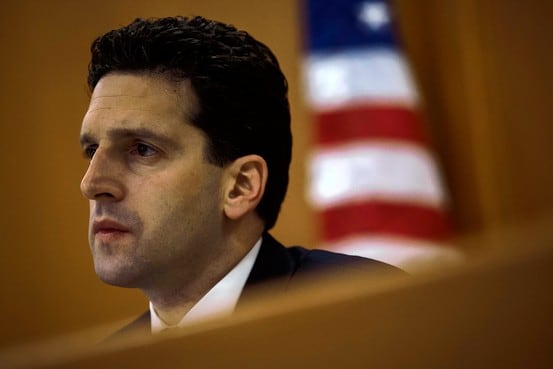
Tuesday saw both main organizations who claim to represent the interests of Bitcoin and its community, the Bitcoin Foundation and Digital Chamber of Commerce, making efforts to extend the comment period on Ben Lawsky’s BitLicense regulatory proposals.
In a letter sent to Lawsky, the Bitcoin Foundation’s Jim Harper said:
“With some important, sophisticated exceptions, the Bitcoin community is not well-versed in New York financial services law or regulation. It takes time to gather the meanings of legal terms of art and to compare them with emerging technologies, processes, and business models in the Bitcoin world. The Bitcoin community will be able to more meaningfully comment with more time to consider the proposal. The Bitcoin community is not used to being a heavily regulated industry and Bitcoin supporters may feel unable to comment on the proposed regulations “because the language doesn’t tell you what the goal is.”
The Bitcoin Foundation requested a minimum of 45 additional days to be allowed for public comment and feedback, and said that an extended comment period of up to six months would be appropriate. Currently, the public has 45 days from July 23 to comment on the proposed legislation. After the 45 days, Lawsky has stated he intends to make changes to the proposal accordingly, and then send it back out for an additional 30 day review.
“We suggest not only that you extend the comment period by more than a nominal period, but also consider conducting hearings on the proposal and adopting an iterative process, in which you issue drafts, take comment, and re-issue drafts until all issues are fully vetted,” said the foundation in its letter.
“The Bitcoin community will be able to comment more cogently if you share the research and analysis that underlies the proposal. The community can help you fit regulatory means to public interest ends if they have access to the risks your study of digital currencies identified. The department should use modern tools to conduct a rulemaking that befits the coming era, the Bitcoin era.”
In order for the Bitcoin community better understand why Lawsky designed the BitLicense proposals the way he did, and for the community to be able to better comment on the BitLicense proposal in general, the foundation also requested that Lawsky publish a public document detailing his rationale behind the proposals. The foundation wants to know what novel aspects of digital currencies Lawsky’s research identified, along with what unique risks his office identified with Bitcoin.
“There certainly are risks — the community would benefit from understanding how your office frames them,” said the foundation. “We recommend that you publish the research and analysis referred to in the statement of needs and benefits as soon as possible, but well before the close of the first round of comments.”
The Bitcoin Foundation followed by advising Lawsky that if he chooses not to release a public explanation of risks and novel aspects of Bitcoin that his research identified, that he should treat their comment as a request under the New York Freedom of Information Law “for the opportunity to inspect or obtain copies of any risk management and cost-benefit analysis (or any other systematic assessment) that is a part of the ‘extensive research and analysis’ referred to in the statement of needs and benefits for the proposed regulation.”
Lawsky was further encouraged to thoroughly engage the community through open-rulemaking on sites like Github that provide decentralized administrative features appropriate for public comment.
“A truly open rulemaking would allow participation far richer than the ability to comment once or twice on draft regulations. The department could take comments and amendments, and interact with commenters, in a better organized and more interactive fashion. We are confident that the community will meet you wherever you announce you will be engaging with them,” said the foundation’s letter.
Lawsky’s office responded Tuesday saying that it is considering the request for extension and will provide documents to the foundation within 20 days.
Matthew Anderson, a spokesperson for the NYDFS, also told BankInnovation.net:
“Yes, we are open to [extending the comment period.] We are very serious about taking the comments seriously. We try not to prejudge any alterations until we get a full sense of the comments and very committed to making sure we get this right. We certainly don’t have a monopoly on the truth, since it’s very new. … Any area is open to changes where we’re persuaded. If folks make a strong case, we’re willing to make sensible alterations, similar to other regulatory areas.”
The other Bitcoin organization reaching out to Lawsky is the newly created Chamber of Digital Commerce, which was formed with the goal of advancing Bitcoin in Washington. The non-profit, led by Perianne Boring, is asking the Bitcoin community to sign this petition requesting an extension.
“The Chamber of Digital Commerce is seeking supporters to sign our petition to Benjamin Lawsky, New York’s Superintendent of Financial Services, asking him to extend the comment period of the proposed BitLicense Rules and Regulations through the end of 2014. An extension is necessary to allow the industry time to formulate proposals that address the NY DFS goals of providing guardrails that do not threaten technological innovation,” read the press release.
A third group of 400 individual Bitcoin enthusiasts and industry leaders sent an additional letter to Lawsky earlier in the week asking for an extension of the comment period.
The community is still waiting on an official statement on whether the comment period will be extended.
There is an interesting divide in the Bitcoin community over whether Lawsky’s regulations are overkill or not. There are the strict crypto-anarchists who believe on principle that the regulations are unnecessary and even unlawful, and are likely more of a power grab than anything. If regulations are needed at some point, they can be fit into preexisting framework instead of achieved through proposals that stifle innovation. And then there are those middle of the road entrepreneurs who see the good and the bad amongst the proposal, but in the end believe that it will work out in Bitcoin’s best interest.
Then we have the merchants, exchanges and other businesses who who will bear the largest brunt of the BitLicense proposal. Larger businesses are obviously more capable of dealing with the additional red tape and the increased operating costs associated with adhering to the regulations, whereas smaller businesses have stressed that they may no longer be able to afford to operate under such strict regulations, due to lack of resources.
Mr. Lawsky said last week that he was willing to address concerns that it would be difficult for smaller companies to comply with the regulations.
Such division within the Bitcoin community puts organizations like the Bitcoin Foundation and the Digital Chamber of Commerce in an unusual position. It will certainly be interesting to see how the community is represented by these two foundations against such a innovation-killing, regulatory monster.
Will the Bitcoin Foundation — the organization that has recently seen high level resignations over lack of transparency — and the Digital Chamber of Commerce, two organizations founded and run autonomously from the community, actually act on behalf of the community? Or will they morph into centralized, power-hungry, oligarchic bureaucracies that are so typical of similar ‘representative’ organizations?
So far, it seems that both central Bitcoin organizations are adequately addressing Lawsky’s proposals on behalf of the community, and Lawsky seems to be handling the criticism in a professional manner. It may seem like a long shot, but the community could end up seeing a mutually beneficial, collaborative effort between bitcoiners and NY regulators which results in satisfactory agreements between both regulators and bitcoiners.
But only time will tell the true intentions of New York regulators. Are their proposals designed with the pure intentions of protecting consumers, or is that merely an excuse that allows them to water down and restrict the technology that threatens the state’s current monopoly on power, control and monetary policy?







